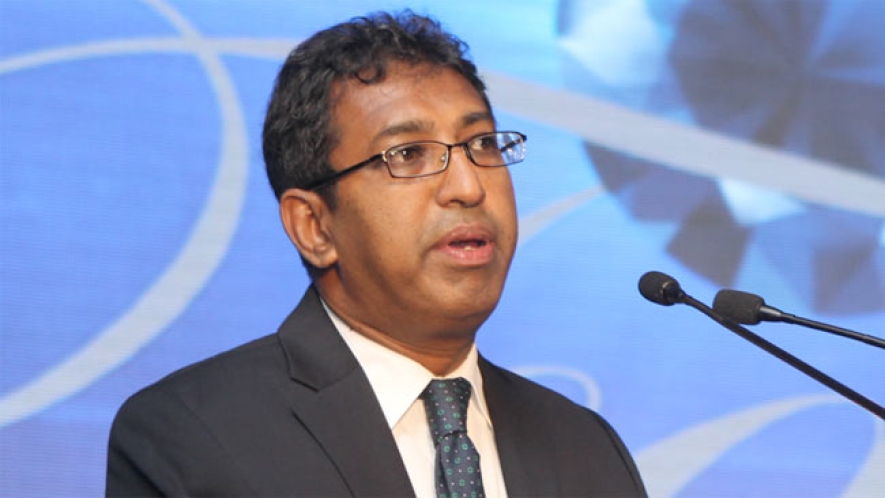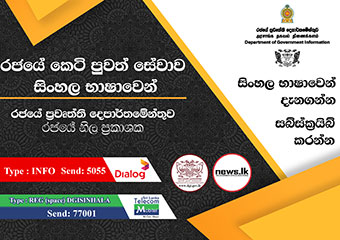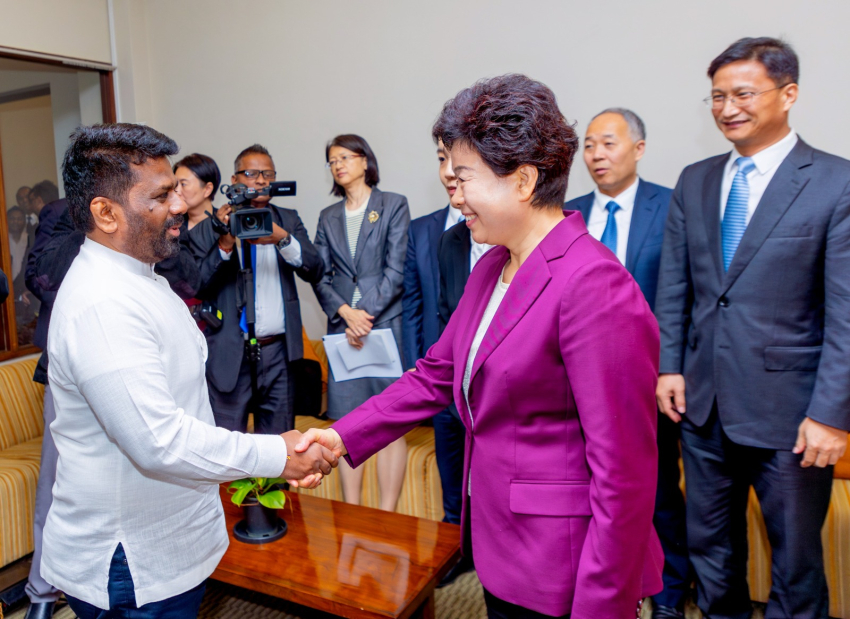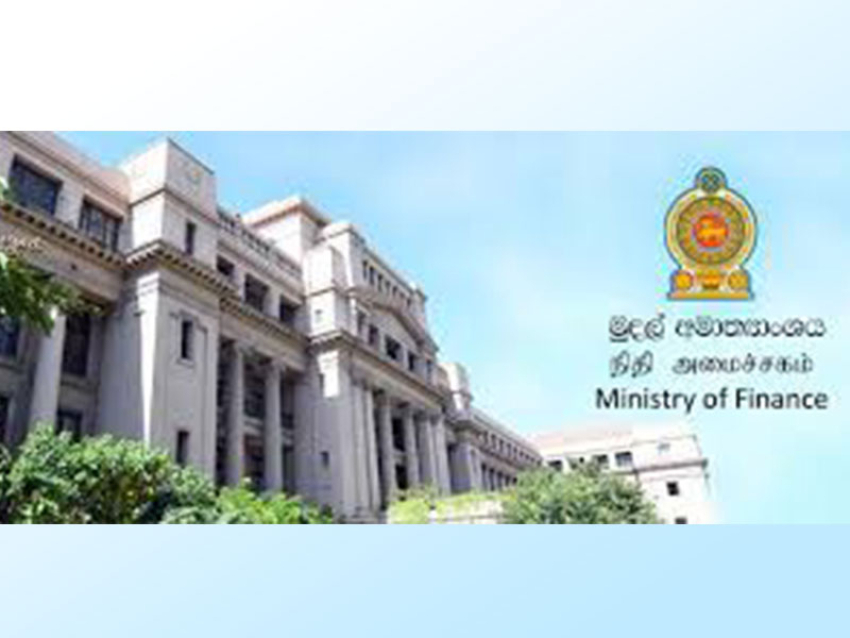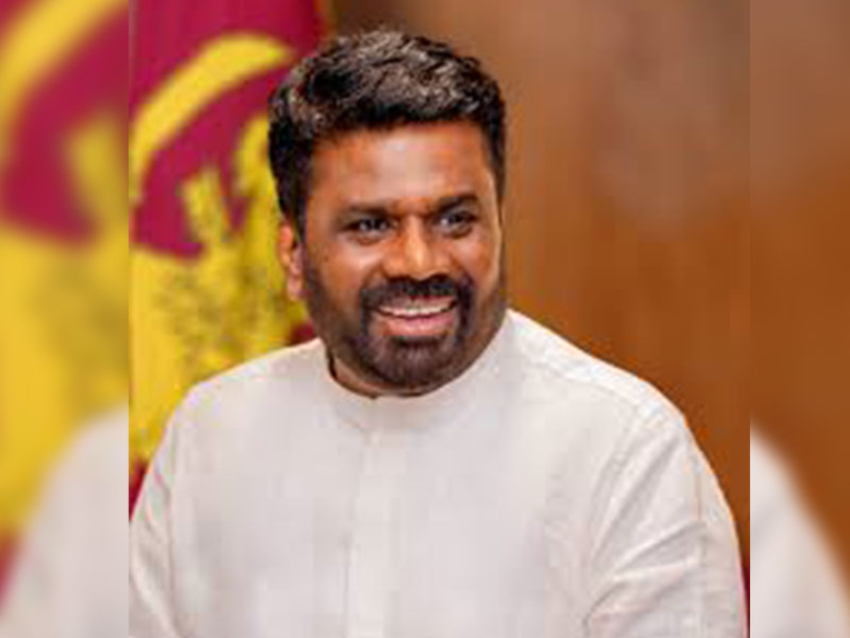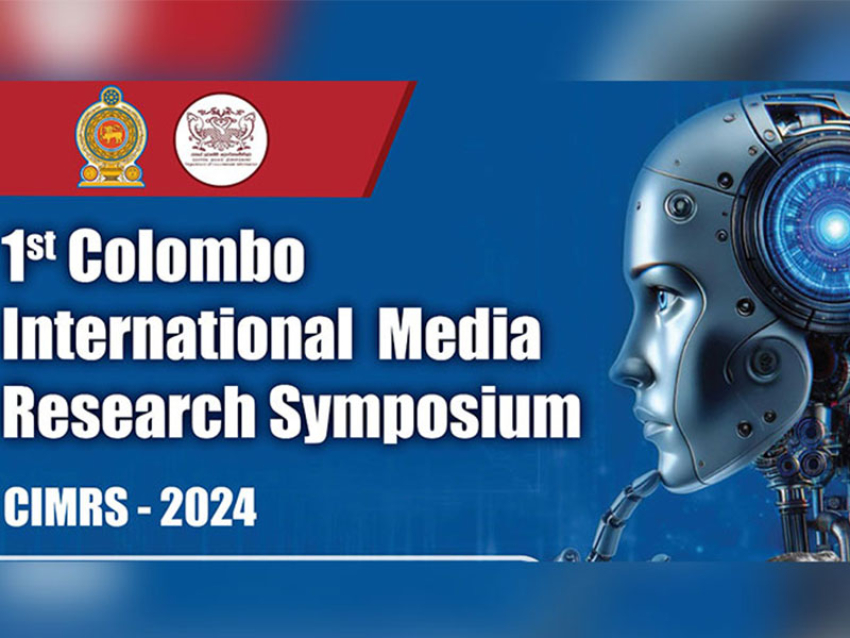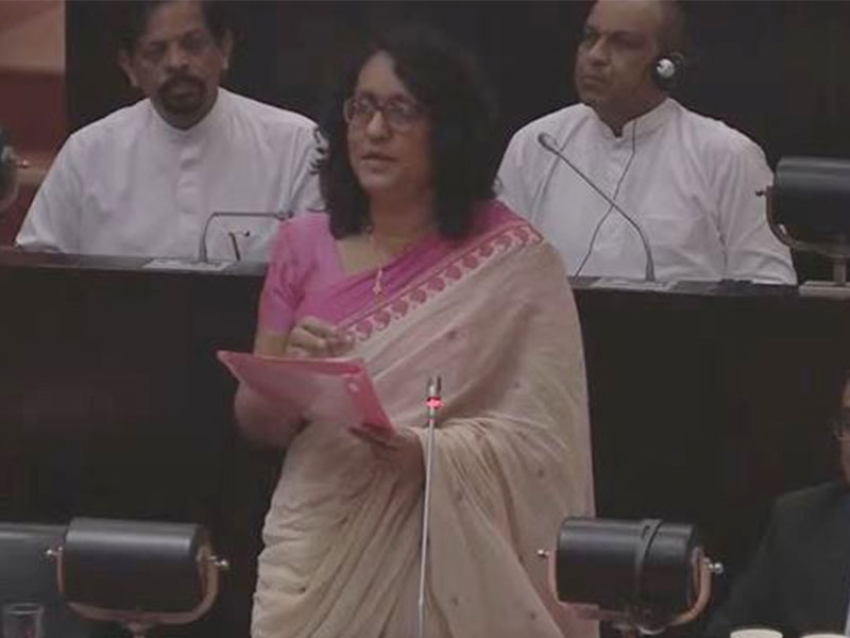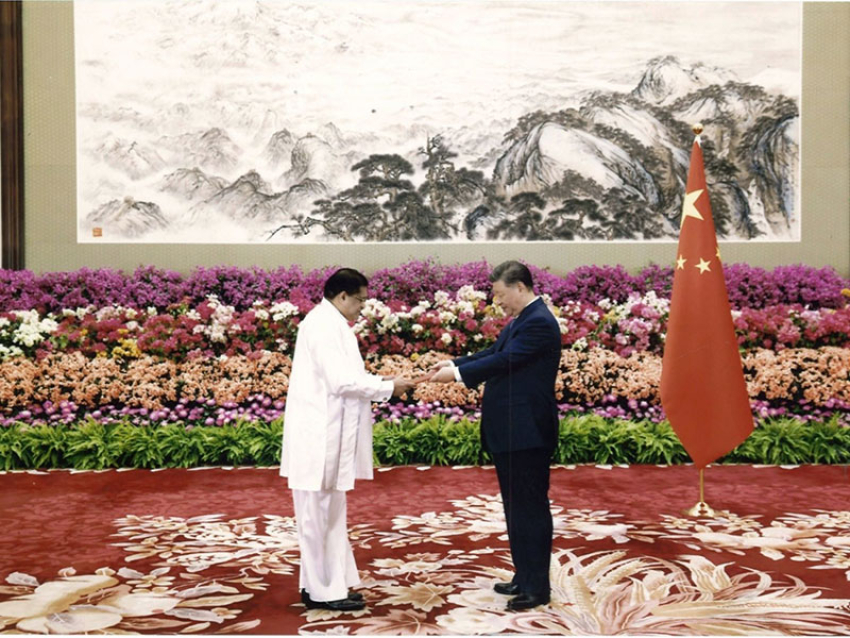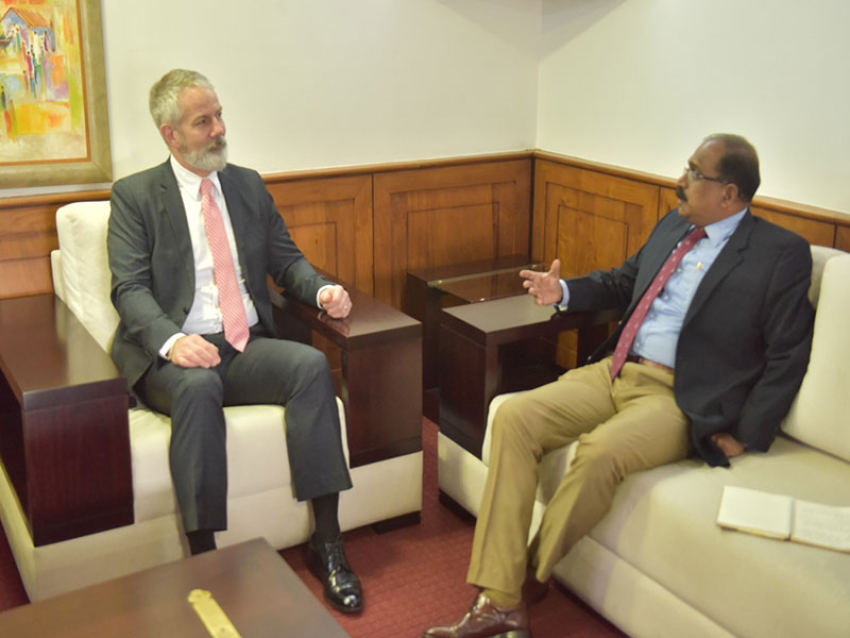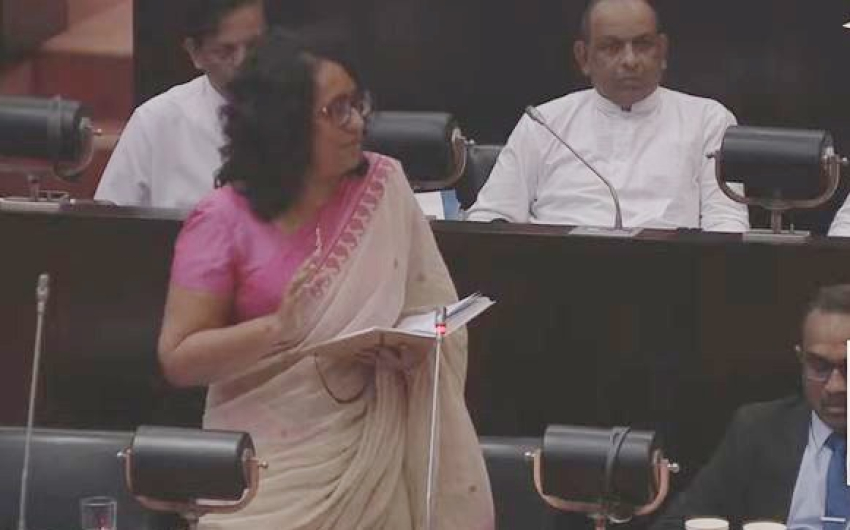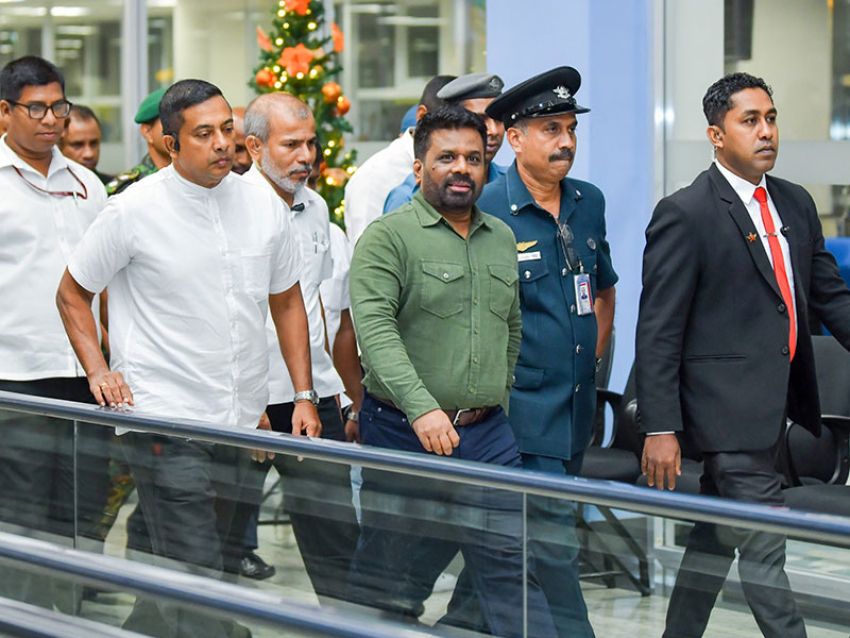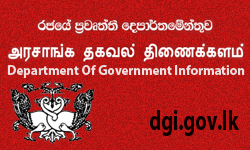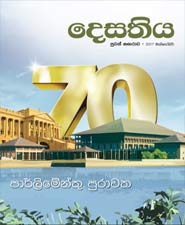Harsha de Silva, MP, Deputy Minister of Foreign Affairs
The accusation by the former President
Former President Mahinda Rajapaksa has been repeating adnauseam over the last few weeks that the present government has taken USD 6,361 million in foreign loans in its fifteen-month lifespan thus far but hadn’t even built a culvert with that money.
He says that he could have built two Mattala airports, one Hambantota port, one Norochcholai coal power plant, one Colombo-Matara highway, one Colombo-Katunayake highway, not one, but two Colombo port cities and one 500 MW Sampur coal power plant with that money.
Finally, he says that the present government is incapable of running the country and that he should be given the opportunity once again to ‘rescue’ Sri Lanka.
The calculation of the USD 6,361 in loans
Mr Rajapaksa’s calculation of the USD 6,361 million the present government borrowedis as follows:
1. Currency swap of USD 400 million in March 2015 and USD 1,100 million in May 2016. So in currency swaps, the total is USD 1,500 million.
2. International Sovereign Bond of USD 650 million in May 2015 and another USD 1,500 million ISB in October 2015. So in ISBs, the total is USD 2,150.
3. Sri Lanka Development Bonds totaling USD 2,711 during the tenor of the new government.
So, adding together all of the above Mr Rajapaksa comes up with the grand total of USD 6,361 million ‘debt’ that the present government got in to in the last fifteen or so months. Let us analyze them one by one.
Currency swaps
What is a currency swap?It is a swap; meaning an exchange. In a central bank currency swap two central banks exchange a particular currency with another with an agreement to unwind that swap at a given date at a given exchange rate and or a given interest rate.
India has such swap agreements with each SAARC country for up to USD 2,000 million on which they can draw if needed. In fact, during Mr Rajapaksa’s rule, in September 2014, Sri Lanka also entered in to a USD 1,600 million (or Yuan 10 billion) swap agreement with China.
While most of the time currencies are exchanged, sometimes they are not, but is structured as a short term loan to be paid back with interest. In the recent case of India, I understand it was the latter.
These short term exchangesare, for the most part, used to either tide over currency pressure or to directly settle bilateral trade transactions. And these take place all the time around the world. As at present US, Canada, Euro Area, Switzerland, Japan, Australia, China, Australia, UK, India, Brazil, Singapore, Indonesia, Pakistan, Korea besides Sri Lanka and dozens of others have various swap agreements between and among them. They utilize them based on need.
Mr Rajapaksa attempts to portray that Sri Lanka got in to ‘debt’ with India to the tune of USD 1,500 million in currency swaps. The reality is quite different.
A USD 400 million swap was entered in to in April and unwound in October. Another USD 1,100 million swap was entered in to in to September 2015 and unwound in March 2016. This means the ‘short term loans’ were taken and already settled. The two central banks can at any time reenter in to swaps to be unwound at agreed upon dates as per the SAARC or any other specific currency swap agreement. I believe they have entered in to another USD 400 million short term swap recently to be unwound soon and is discussing another USD 700 million swap. These, as described are short term facilities that are cleared in a matter of months at the most (the USD 1,500 million referred to has already been settled) and not the kind of ‘debt’ as implied.
International Sovereign Bonds
Now, let us take the International Sovereign Bonds, or ISBs.Yes, the new government has issued 2,150 million in ISBs in 2015.
If one takes a cursory glance at the history of ISBs, it becomes clear that it was during Mr Rajapaksa’s time the ISB program was started. In fact, there is nothing wrong with ISBs if used for productive purposes, and in 2014 his government issued USD 1,500 in such bonds. But, as far as we know, by and large the proceeds were not used for the intended purposes but instead for general budgetary support.
In addition to the ISBs that year Mr Rajapaksa’s government used SriLankan Airlines and the National Savings Bank, among others, to issue international bonds for an additional USD 175 millionand USD 250 million respectively bringing the total international bonds; both sovereign and corporate, to USD 1,925 million.
The year prior to that, in 2013, his government got NSB to issue USD 750 million in 5-year international bonds for the highest ever interest rate of 8.875 percent plus fees when the global 5 -year benchmark was only 1.3 percent. Some may recall that the then Chairman, who was brought in after the infamous transaction where NSB purchased shares of the bankrupt ‘The Finance Company’ for a hugely inflated amount, was replaced by a ‘yes person’to proceed with the same as he was not willing to enter in to another disaster. For those interested, NSB purchased shares of TFC for LKR 49.50 while today the shares are trading at just LKR 3.25.
The unbiased reader will appreciate that it is not easy to make drastic adjustments to the current ISB program which has been set in motion many years ago; meaning to pay back the amount without rolling over. Nevertheless, the present government is doing its very best to bring the program to a manageable level, and utilize the proceeds for useful capital expenditure. The overall objective is to reduce the debt to equity ratio in projects by increasing foreign direct investments on public-private-partnership basis, among others.
The hidden loans
A point to note is that, as referred to earlier, Mr Rajapaksa used SriLankan andNSB as well as the Urban Development Authority, National Water Supply and Drainage Board, Road Development Authorityamong others to ‘hide’ the debt from the national debt figure so that he could argue that national debt to GDP was coming down.
The argument was that these state owned enterprises had strong balance sheets and could borrow and repay on their own. However, it is well known that none of these SOEs have the capability of paying back the massive loans they have taken and at the end of the day the treasury is called upon to make payment. The recent expose’ on the way SriLankan had borrowed and how it is becoming a unbearable burden on the government to service the loans is a clear example of how wrong the thinking was; or perhaps how arrogant the decision makers were with no concern about being responsible to society.
These ‘hidden loans’ are part of the USD 1 trillion that the Prime Minister has been speaking on recently for which a forensic audit is to be conducted to get accurate details.
Sri Lanka Development Bonds
Finally, let us take the case of Sri Lanka Development Bonds or SLDBs. I had argued many years ago that this was a misnomer; as SLDBs were never, or hardly ever used for development purposes. They were used to repay SLDBs, in particular, coming due; to rollover.
SLDBs are issued locally for those who can invest in USD denominated debt instruments and the tenor usually ranges from a few months to a few years. They are typically taken up by local banks and other eligible parties to receive tax free interest income.
Yes, SLDBs worth USD 2,491 million had been issued in 2015 to roll over loans taken in the past for the most part and some additional funding. Total outstanding SLDBs stood at USD 2,984 as at end of 2014. A total of USD 2,084 million is due in 2016 and at least that amount would have to be issued to roll them over unless other funds are found.
Project costs and project loans
Now, let us turn to the costs that Mr Rajapaksa has provided for some of the large white elephant projects that were started during his period. The objective here is not to discuss whether the costs were competitive or whether they were inflated, but to show the amounts shown and the actuals spent are vastly different and that they were funded by project loans.
For instance, he says the Magampura Mahinda Rajapaksa Port cost USD 426 million to construct, but the actual cost thus far has been overUSD 1,300 million and it is not yet complete. This figure is without the associated costs including USD 130 million on oil storage tanks that have never been used.
In fact, almost all of the funds that were utilized to build these infrastructure projects came from project specific loans be it from China or elsewhere. This includes the rest of the projects in his list; Mahinda Rajapaksa International Airport in Mattala included.
So, even though Mr Rajapaksa attempts to make it seem that the various loans that were taken by the present government could have been used to build infrastructure, including culverts, the facts are totally opposite to that.
Government owned infrastructure is built using long term project loans unless governments have surpluses or are public private partnerships. No infrastructure has ever been built using swap agreements anywhere in the world and short tenor ISBs are not suited for assets that take a fairly long time to start generating revenue. As mentioned earlier, SLDB is a misnomer and is not suited for development projects.
For example, the first USD 306 million for the MMRP was from China EXIM Bank, originally agreed upon at LIBOR + 0.90 percent, or todays rate of 1.78 percent but subsequently changed to fixed rate of 6.30 percent on a cabinet paper presented by Mr Rajapaksa himself; the next USD 140 million again from the same bank including the USD 45 million to blast a ‘rock’ that created much discussion and a further USD 808 million also from China EXIM Bank for Phase II. The Phase I loan, signed in 2007, has a 15-year tenor with a 4-year grace. This is already 2016.
Of the USD 130 million spent for the unused oil tanks at the port USD 76.5 was also a loan from the same bank while the rest came from local banks.
MRIA was also similar. The original cost was USD 208 million funded by China EXIM Bank and a further USD 100 million for improvements later and some USD 40 million for oil storage facility; in excess of the said USD 190 million and from sources not divulged by him but in fact from project loans.
So, it is clear that the money for the seaport and airport named after Mr Rajapaksa was funded by a series of project specific loans and not by the ISBs, swaps, or SLDBs. This was the case with respect to all other developments in Hambantota; be it expressway-like roads, railways, overpasses, huge cricket stadium, tele-village etc.
Repaying project loans
Before a project is financed thorough assessments are carried out to determine if the project to be undertaken will have revenue streams to repay the loan. In the case of the huge loans taken for the infrastructure that bears Mr Rajapaksa’s name, the question is, if feasibility studies were done? In fact, the details available at the Department of National Planning indicates no proper feasibility studies were ever conducted on any of the projects that have now become ‘white elephants’.
So, in such situations the government has no choice but to borrow in the international markets using various types of instruments to make payments that are becoming due.
In 2011 Mr Rajapaksa said that USD 650 million investments by foreign investors at the first stage of the port had “strengthened the confidence of global industrial and commercial giants regarding the success of this innovative project in southern Sri Lanka.”
The country was told that 27 investment proposals had beenreceived and the Cabinet had approved seven of them. They were a sugar refinery plant,a cement grinding and bagging plant, a fertilizer plant, a petro-chemical plant and three warehouse complexes.
His top port expert, the then chairman of the nation’s port authority boasted that “effective intervention of President Mahinda Rajapaksa to lure the international community to commence business in sustainably peaceful environs in the country has brought about the dawn of an era of prosperity for all Sri Lankans” and that at the second stage of the investment, 11 more investors were to arrive with investments of USD 1.15 billion, which would increase the total investmentat the port to USD 1.8 billion by 2013.
The unfortunate truth is none of that has happened and the meagre income from the seaport itself is based on the roll-on roll-off business created through a combination of deep discounts and effective banning of unloading vehicles at Colombo. The airport has no regular income.
Therefore, as mentioned earlier, the present government has no option but to obtain dollar funds from further borrowings to repay the high cost loan payments coming due now.
The truth behind the use of proceeds of loans
What I wished to clarify from this short explanation is that the story that is being spread; that the present government is taking huge loans but are not utilizing the same for any productive purpose is totally inaccurate. The truth is that the loans taken on project basis to build most of the infrastructure cannot be serviced as the infrastructure is un or under-utilized and has hardly any revenue forcing the treasury to make payments on the due dates by finding money from other sources.
Therefore, the ‘story’ that the present government is so inept that it is just borrowing large amounts without using the funds for any productive purposes, even to build a culvert, has been carefully crafted to mislead the people. So, whoever fabricated it did so fully aware of the fact that he or she was doing so purely to deceive the people of Sri Lanka for cheap political advantage.
Can we go on like this?
For how long can we as a country continue this way? Not for long. Sri Lanka must find a way to earn its own dollars to, at the very least, repay the principal and interest payments that are falling due on the gigantic loans taken by Mr Rajapaksa for projects that bear his name but have no revenue streams.
The government must reverse the direction of Sri Lanka’s exports to GDP ratio. It must export a lot more than it is doing now. Particularly with the stagnant remittances from the middle east, which could start to decline, sent by the million or so workers who suffer untold misery to do so, the challenge becomes even tougher.
A fact that is stubborn but is very revealing is that during Mr Rajapaksa’s regime exports to GDP ratio fell from 34 percent to 14.5 percent. Just this figure will help the unbiased reader understand the present government’s predicament. It inherited an economy that was in massive difficulty on the external front but window dressed by certain creative accountants to deceive the people.
Way forward is to integrate Sri Lanka with the rest of the world
In my role as the Deputy Minister of Foreign Affairs I am doing my best to push the agenda of economic diplomacy forward so that we can change directions of the exports to GDP ratio. To export more we need to bring in those who can invest in Hambantota and other areas of Sri Lanka.
To get FDI the investors need to see a potential export market. Given ours is a small 20 million lower middle income economy it is imperative we expand our reach to the region. We must be able to tap in to the emerging South Asian middle class in India, Pakistan and Bangladesh as well as in Central Europe. From the early days it was during the times that we as a nation was integrated with the world that we prospered.
The challenge for us is to once again make Sri Lanka a hub. This time the hub of the ‘Asian oceans’, like the Prime Minister has already said. There are many who are attempting to derail this government’s economic plan by blocking the initiatives to integrate Sri Lanka with the rest of the world. But I am convinced this government will succeed in thisendeavor.

